I'm trying to make a map of my study site using ggmap & Stamen maps. I've seen a few similar questions but haven't figured out a way to incorporate the solution into my Stamen map code.
I have two questions regarding this: 1. How can I custom label the points on the map? 2. How can I add a scale to maps in Stamen map? (either as a line indicating distance or something like x cm on map = y km in real life)
Tcoords <- read.csv("Tcoords.csv")
My file looks like this
# trap latitude longitude
1 52.34431 0.5374620
2 52.34281 0.5382080
3 52.34468 0.5406787
4 52.34357 0.5398280
5 52.34431 0.5397050
6 52.34516 0.5406294
In response to the suggestion, I've pasted the results to dput(head(Tcoords)) here:
structure(list(trap = c("1", "2", "3", "4", "5", "6"), latitude = c(52.344312,
52.342809, 52.3446849, 52.343572, 52.34431, 52.3451601), longitude = c(0.537462,
0.538208, 0.5406787, 0.539828, 0.539705, 0.5406294)), row.names = c(NA,
6L), class = "data.frame")
This the code I'm using to plot my points
center = c(lon = 0.5406294, lat = 52.3451601)
qmap(center, zoom = 16, source = "stamen", maptype = "watercolor")+
geom_point(aes(x = longitude, y = latitude), size = 4, shape = 21,
fill = "dark green", data = Tcoords)
But somehow trap isn't being recognised as an object. It's probably something elementary but I'm not really sure what I've missed (new to R). I've saved "trap" as a text object here.
Thanks for your help!


